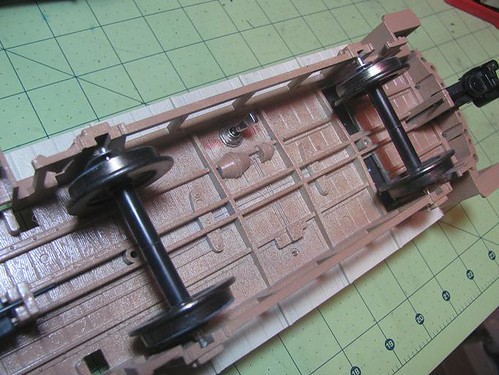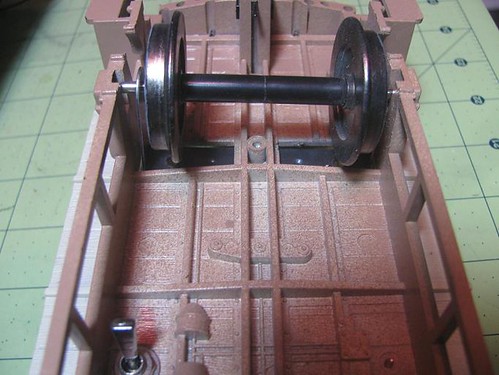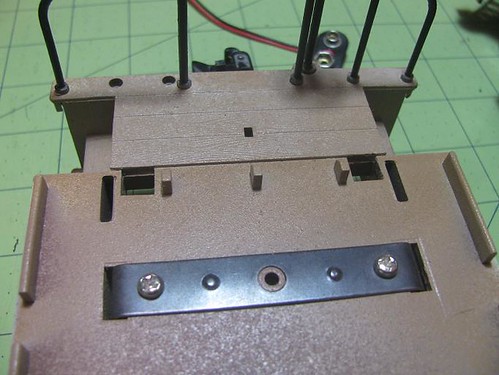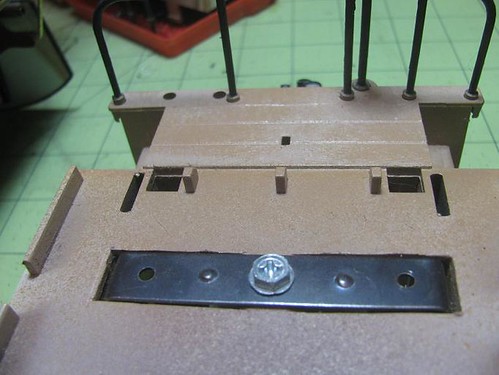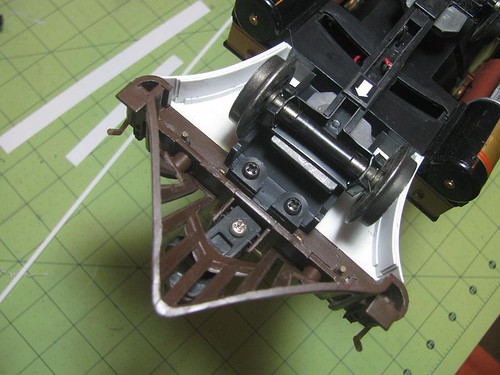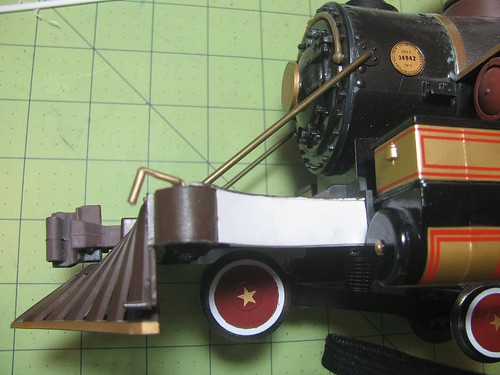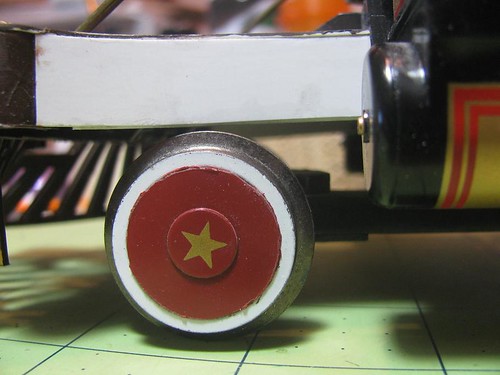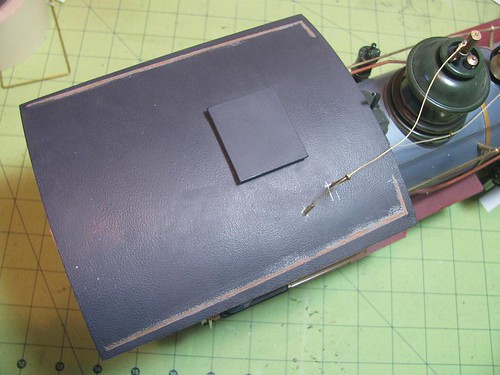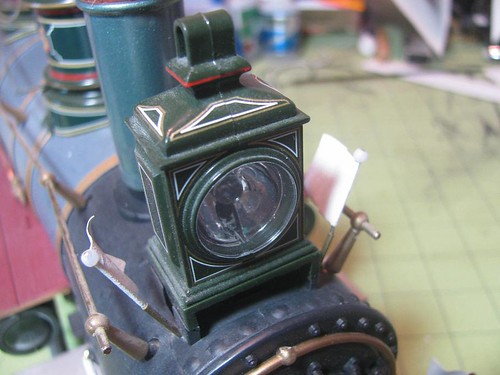Yay! Finally felt good enough to work on something again!
Made progress on an on again off again detailing project on a Bachmann Big Hauler Virginia and Truckee 4-6-0. It is numbered 26 and decorated 1870s style: V&T had a 4-6-0 Number 26 but it was 1910 or close, I’m too lazy to crack the book and look at the moment. ![]() Was also not a wood burner.
Was also not a wood burner.
Somewhere in that book it mentions earlier freight cars had wheels painted grey/gray, pick your favorite spelling. Testors classic enamel 1138 gloss grey is paint used.
A couple days ago noticed I’d not completely painted one wheel on the B’mann bobber caboose.
So …
(as both identification and for fun I’m painting wheel faces on my freight cars a color complementing the paint or trim color)(it may be the metal wheels topic over on Rolling Stock which got me looking at the wheels on the caboose)
V&T had a full size cupola-free caboose numbered 9 so I figured this freelance four wheeler should be caboose number 4.5.
And while having the train on the table decided to drill holes in bottom of cylinders for future installation of cylinder cocks - which I don’t have, and yet found manufactured detail parts of, so will have to brainstorm something suggesting the part. Have 7 steam locos which I’d like to have that detail for - 7 x 4 means 28 of the part!
Also made hole in balloon stack for adding ash dump porthole.
 IMG_3963_30 by Forrest Wood, on Flickr
IMG_3963_30 by Forrest Wood, on Flickr
 IMG_3964_30 by Forrest Wood, on Flickr
IMG_3964_30 by Forrest Wood, on Flickr
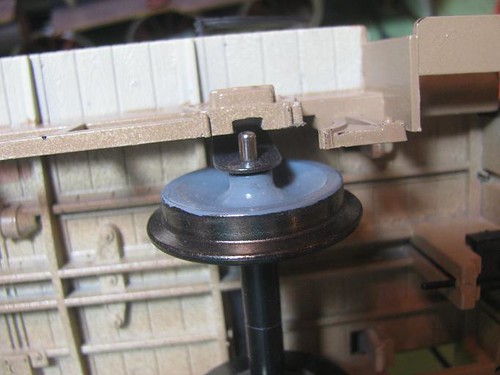 IMG_3965_30 by Forrest Wood, on Flickr
IMG_3965_30 by Forrest Wood, on Flickr
Have no idea why camera made wall look pink - it is white.
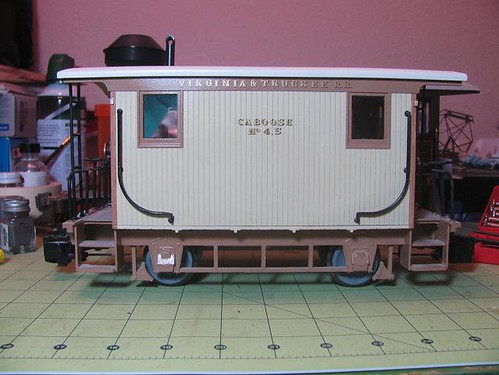 IMG_3966_30 by Forrest Wood, on Flickr
IMG_3966_30 by Forrest Wood, on Flickr

